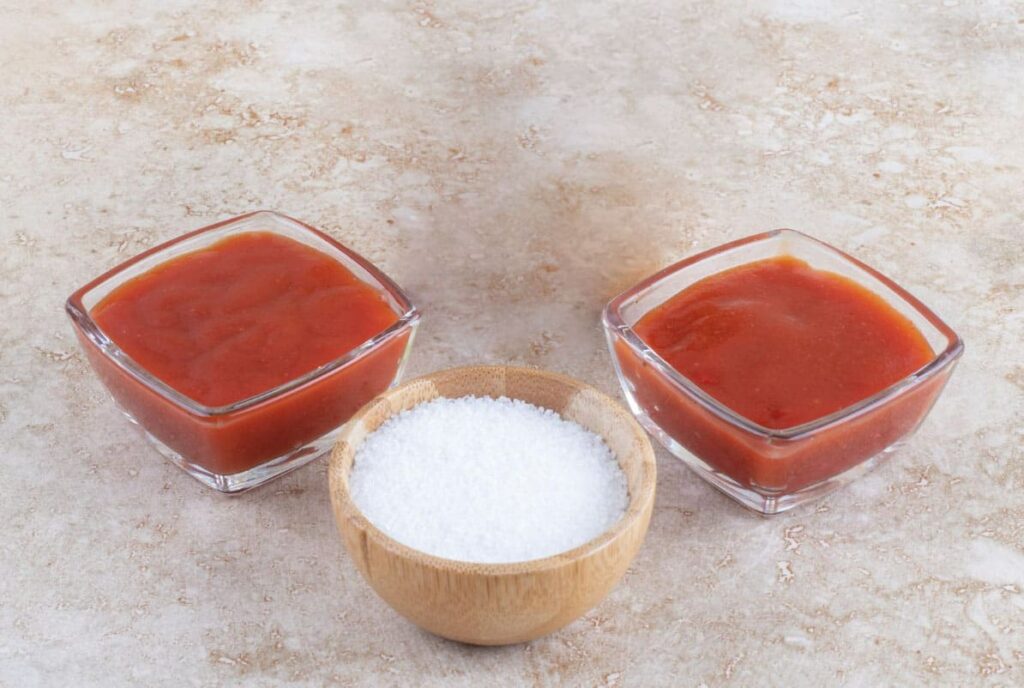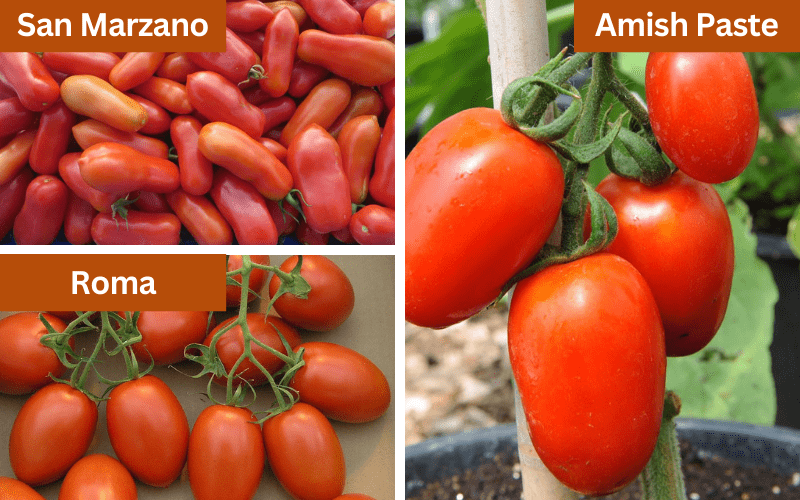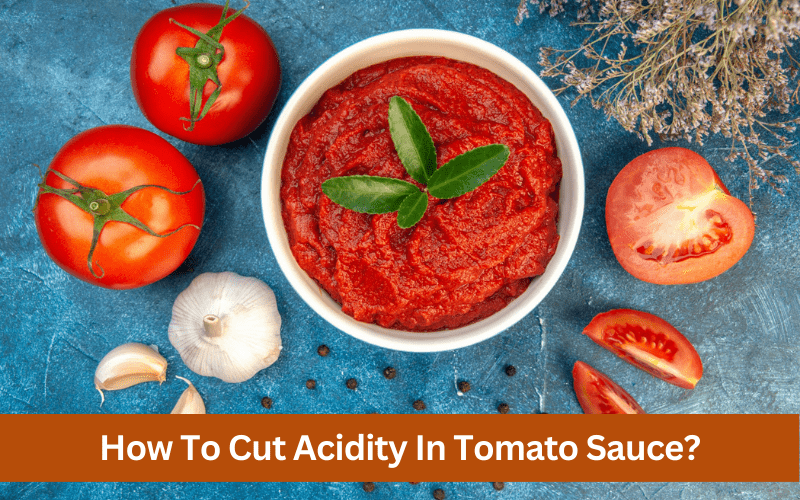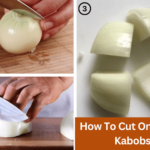As someone who loves to cook Italian food, there’s nothing quite as satisfying as a perfectly balanced tomato sauce. But, as I learned the hard way, acidity can make or break a sauce. I remember making a big pot of spaghetti with meat sauce for a dinner party, only to have my guests complain about heartburn all night.
It wasn’t until later that I realized the culprit was the overly acidic tomato sauce. That experience taught me the importance of knowing how to cut acidity in tomato sauce. Today, I’m excited to share some of the techniques I’ve learned along the way to help you create a delicious and balanced tomato sauce every time.
Understanding acidity in tomato sauce
Acidity in tomato sauce refers to the pH level of the sauce. A pH level of 7 is neutral, anything below that is considered acidic, and anything above is basic. When making tomato sauce, the acidity level can vary depending on various factors. An overly acidic tomato sauce can result in a sour, tart taste that can be unpleasant.
The acidity level in tomato sauce can be influenced by a variety of factors, such as the type of tomatoes used, the cooking time, and the cooking method. For example, using certain types of tomatoes, such as San Marzano, can result in a less acidic sauce compared to other varieties like Roma. Longer cooking times can also increase the acidity level of the sauce as the tomatoes break down and release more acid. Similarly, cooking tomato sauce in a metal pan can increase the acidity level due to a reaction between the tomatoes and the metal.
Understanding the factors that contribute to acidity in tomato sauce is crucial in finding the best way to cut the acidity level while still maintaining the desired flavor profile. In the next section, we’ll explore different techniques for reducing acidity in tomato sauce.
How to cut acidity in spaghetti sauce?
Techniques for reducing acidity in spaghetti sauce are aplenty and can help create a more balanced flavor profile. Here are some popular methods to try:
Tip 1: Add sweetness
One of the easiest ways to cut acidity in tomato sauce is to add sweetness. Sugar can balance out the acidity, making the sauce more palatable.
How much sugar to cut acidity in tomato sauce? You don’t need to add a lot of sugar to achieve this effect. Start with a teaspoon or two and adjust to taste. If you prefer a natural sweetener, you can also try adding grated carrots or finely chopped onions, which will add a subtle sweetness without being overpowering.

Tip 2: Use baking soda (Recommend)
Another way to reduce acidity in tomato sauce is to add a small amount of baking soda. Baking soda is alkaline, which means it can neutralize the acidity in the tomatoes.
How much baking soda to reduce acidity in tomato sauce? It’s essential to use baking soda sparingly, as too much can result in a soapy taste. Start with a ¼ teaspoon of baking soda and stir well. Taste the sauce and add more if necessary, but be careful not to overdo it.
But what if you do not like using baking soda, how to cut acidity in tomato sauce without baking soda? Continue reading!
Tip 3: Add cream or butter
Adding cream or butter to tomato sauce can also help cut the acidity. The fat in cream and butter can coat the tongue and reduce the perception of acidity. Additionally, the creaminess can balance out the sharpness of the tomatoes, creating a more well-rounded flavor. If you’re watching your fat intake, you can also try using a dairy-free milk alternative, such as coconut milk or almond milk.
Tip 4: Use low-acid tomatoes
Not all tomatoes are created equal when it comes to acidity levels. Some varieties are naturally sweeter and have lower acidity levels than others. If you’re making tomato sauce from scratch, consider using low-acid tomato varieties such as San Marzano, Roma, or Amish Paste. These tomatoes are meatier and have a sweeter taste, making them perfect for tomato sauce.

Tip 5: Cook for longer
Cooking tomato sauce for a more extended period can also reduce the acidity level. As the sauce simmers, the acidity level will gradually decrease, and the flavor will become more complex. Not to overcook the sauce, as this can cause it to become too thick and lose its flavor.
Tip 6: Add herbs and spices
Herbs and spices can also help balance out the acidity in tomato sauce. Basil, oregano, and thyme are all excellent choices that can add depth of flavor while reducing the perception of acidity. Additionally, spices such as cinnamon, nutmeg, and allspice can add a subtle sweetness that can help cut the acidity.
Tip 7: Use vinegar
While it might seem counterintuitive, adding a small amount of vinegar to tomato sauce can help reduce the acidity. Vinegar is acidic, but it’s less acidic than tomatoes, which means it can balance out the flavor. I suggest you use Apple cider vinegar, taste your sauce as you adjust it and make sure the flavors are well-balanced.
Tip 8: Add vegetables
Adding vegetables to tomato sauce can help cut the acidity while also adding more nutrients and flavor. Vegetables such as carrots, celery, and bell peppers are all great choices that can add a subtle sweetness to the sauce. You can either puree the vegetables and add them to the sauce, or chop them finely and sauté them before adding the tomatoes.
Tip 9: Use less salt
Salt can enhance the flavor of tomato sauce, but too much salt can also make the acidity more pronounced. If you find that your tomato sauce is too acidic, try using less salt. You can also try using alternative seasonings such as garlic powder, onion powder, or smoked paprika, which can add depth of flavor without increasing the acidity.
Tip 10: Add a pinch of baking powder
Similar to baking soda, adding a small amount of baking powder to tomato sauce can help neutralize the acidity. However, baking powder is not as effective as baking soda, so you’ll need to use a bit more.
Tip 11: Add red wine
Red wine can be added to tomato sauce to reduce acidity because it contains natural sugars and tannins that can help to balance out the acidity of the tomatoes. The sugars in the wine can help to counteract the tartness of the tomatoes, while the tannins can add a slightly bitter flavor that can help to cut through the acidity.
It’s important to choose a wine that is appropriate for the dish you are making. A dry, medium-bodied red wine, such as Chianti or Merlot, can work well in many tomato-based sauces. It’s also important to cook off the alcohol in the wine before adding the other ingredients to the sauce.
Tip 12: Use fresh tomatoes
Using fresh tomatoes instead of canned tomatoes can also help reduce the acidity. Fresh tomatoes are naturally sweeter and have lower acidity levels than canned tomatoes. If you’re making tomato sauce from scratch, consider using fresh tomatoes for a milder, less acidic flavor.
Here’s a table summarizing the different types of tomatoes and canned tomato products, along with their best uses for tomato sauce:
| Type of Tomato/Tomato Product | Best Use for Tomato Sauce |
| Fresh/Ripe Tomatoes | Cherry, grape, and Campari tomatoes year-round; vine-ripened heirloom and beefsteak tomatoes in summer |
| Canned Whole Tomatoes | Chunkier sauces, like Penne Pomodoro |
| Canned Crushed Tomatoes | Smoother sauces with some texture, like Penne with Pink Sauce or Italian Sunday Gravy |
| Canned Pureed Tomatoes | Not recommended due to overly smooth texture |
| Canned Diced Tomatoes | Not recommended due to firm texture and artificial taste |
| Canned/Jarred Tomato Sauce | Not recommended due to unnatural taste and use of preservatives and dried herbs |
It’s important to note that these are general guidelines and personal preferences may vary. Experimenting with different types of tomatoes and tomato products can help you find the perfect sauce for your tastes.
Tip 13: Use a pinch of sugar
Similar to tip 1, adding a pinch of sugar to tomato sauce can help balance out the acidity. However, be careful not to add too much, as it can make the sauce too sweet.
Tip 14: Add roasted vegetables
Roasting vegetables such as garlic, onions, and bell peppers before adding them to tomato sauce can help cut the acidity while also adding a deeper, richer flavor. Roasting vegetables brings out their natural sweetness, which can help balance out the acidity of the tomatoes.
Tip 15: Add parmesan cheese
The final method for how to cut acidity in pasta sauce that adding Parmesan cheese to tomato sauce can help add a salty, savory flavor. Parmesan cheese has a slightly acidic taste, which can balance out the acidity of the tomatoes.

Tip 16: Add seafood
While adding seafood to tomato sauce won’t necessarily lower the acidity level, it can help to balance the flavors and create a delicious and complex sauce.
Seafood, such as shrimp, clams, or mussels, can add a natural sweetness and umami flavor to tomato sauce. The sweetness of the seafood can help to counteract any residual acidity in the sauce and create a well-balanced dish.
It’s important to add seafood at the right time to avoid overcooking. Shellfish, such as clams and mussels, should be added towards the end of cooking, once the sauce has had a chance to develop its flavors. Shrimp can be added earlier on, but should be cooked just until pink and opaque to avoid becoming tough and rubbery.
How to adjust the seasonings after reducing acidity?
Reducing the acidity level of tomato sauce can affect the overall flavor profile of the sauce. It’s important to adjust the seasonings accordingly to ensure a well-balanced sauce.
- After using a technique to reduce the acidity level, taste the sauce and adjust the seasonings as needed. Adding a pinch of sugar can help balance out the flavors and reduce any residual acidity.
- In addition to sugar, herbs can also add depth and balance to tomato sauce. Adding fresh basil, oregano, or thyme can enhance the flavor and aroma of the sauce, while also helping to cut through any remaining acidity.
- Salt and pepper are also crucial in adjusting the flavor of tomato sauce. Add salt in small increments, tasting as you go, until the desired flavor is achieved. Pepper can be added to taste, but be cautious not to overpower the other flavors in the sauce.
By adjusting the seasonings after reducing the acidity level, you can ensure a well-balanced tomato sauce that’s full of flavor and free from any unwanted tartness.
FAQs
Why does my homemade tomato sauce taste bitter?
If your homemade tomato sauce tastes bitter, there could be a few reasons why:
- Overcooking the garlic: Garlic can quickly become bitter if it is cooked for too long or at too high of a temperature. If you added garlic to your sauce and cooked it for a long time, this could be the cause of the bitterness.
- Burnt tomato paste: Tomato paste can easily burn if it is cooked for too long or at too high of a temperature, which can create a bitter taste in the sauce. If you added tomato paste to your sauce and cooked it for a while, check to see if it is burnt.
- Using unripe or low-quality tomatoes: Tomatoes that are not fully ripe or are of lower quality can sometimes have a bitter taste. Make sure you are using ripe, flavorful tomatoes for your sauce.
- Overuse of herbs or spices: Overusing certain herbs or spices, such as oregano or red pepper flakes, can sometimes create a bitter taste in the sauce. Try using less of these ingredients and adjusting the seasoning to taste.
- Acidic balance: While acidity is important in tomato sauce, too much acidity can sometimes create a bitter taste. Try adjusting the acidity level using some of the techniques we mentioned earlier, such as adding a pinch of sugar or dairy.
Final recipe for making tomato sauce less acidic
Ingredients:
- 2 tablespoons olive oil
- 1 large onion, finely chopped
- 4 cloves garlic, minced
- 2 cans (28 oz each) low-acid whole peeled tomatoes
- 1/4 cup tomato paste
- 1 teaspoon dried oregano
- 1 teaspoon dried basil
- 1/2 teaspoon salt
- 1/4 teaspoon black pepper
- 1/4 teaspoon red pepper flakes (optional)
Instructions:
- In a large saucepan, heat the olive oil over medium heat. Add the chopped onion and cook until translucent, about 5 minutes. Add the minced garlic and cook for an additional 30 seconds, until fragrant.
- Add the canned tomatoes (including the liquid) and tomato paste to the saucepan. Use a wooden spoon to break up the tomatoes into smaller pieces.
- Add the oregano, basil, salt, black pepper, and red pepper flakes (if using). Stir well to combine.
- Bring the sauce to a simmer over medium heat. Reduce the heat to low and let the sauce cook for about 30 minutes, stirring occasionally.
- After 30 minutes, use an immersion blender to blend the sauce until it’s smooth. Alternatively, you can transfer the sauce to a blender and blend until smooth.
- Taste the sauce and adjust the seasoning as needed. Serve the sauce over your favorite pasta.
This low-acid marinara sauce is a great option for those who experience acid reflux or have a sensitivity to acidic foods. It’s still packed with flavor, thanks to the herbs and spices, and can be customized to your liking by adjusting the seasonings.
Conclusion
As a self-proclaimed tomato sauce enthusiast, I have experimented with various methods to reduce the acidity in my sauces. From adding baking soda to incorporating seafood and red wine, I have found that the key to achieving a perfectly balanced tomato sauce is through trial and error.
However, by understanding the factors that contribute to acidity, such as the type of tomatoes and cooking time, and adjusting the seasonings accordingly, it is possible to create a delicious sauce that is gentle on the stomach. With the tips and tricks shared in this post on how to cut acidity in tomato sauce, I hope you will feel empowered to experiment and create your own unique recipe that meets your taste preferences and dietary needs. Happy cooking!





